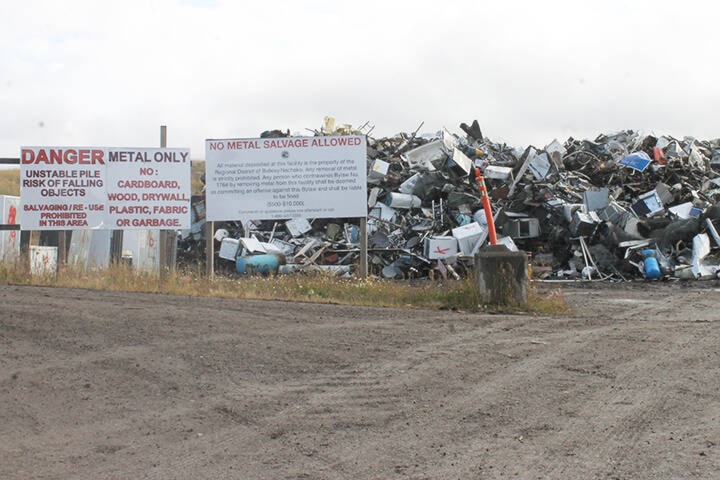On Dec. 14, at the Regional District of Bulkley Nechako’s (RDBN) meeting, the board discussed their implementation of the 2024 Metal Pilot project at �������� Lake Transfer Station and Recycle Depot from their previous discussion on Nov. 28.
Based on the last discussion, RDBN staff recommended investing $100,000 in the 2024 capital budget and $120,000 in the operational budget for this metal pilot project, which may generate revenue of $2.8 million selling scrap metal.
This investment was suggested with operational needs, staff and public safety, and liability considerations.
However, if the pilot project succeeds in �������� Lake, an additional $600,000 for the 2025 capital budget and $720,000 in operational cost investments will be required if board decides to implements this throughout every transfer stations within the region.
Clint Lambert, RDBN’s Francois/Ootsa Lake director, said investing $600,000 for a pilot project simply for scrap metal does not make sense.
He added that pilot projects do not have permanent infrastructures, and they get scrapped off when they fail.
Michael Riis-Christianson, RDBN’s �������� Lake director, stated that he understands the challenges everyone faces in making this decision. Therefore, he motioned to allocate $50,000 for a re-use metal pilot project at the �������� Lake transfer station.
Kevin Moutray, Vanderhoof’s mayor, said that $50,000 is too little for a full-year pilot project while the budget could be used for other things like daycare. He said that this investment for salvaging metal wasn’t affordable and shared his disagreement.
Riis-Christianson clarified to board that his motion is for re-use only, not for salvaging scrap metal. He emphasized that reused metals have a higher value than salvaging in the waste management hierarchy.
Reusing scrap metal has environmental benefits and prevents contamination of land and water with harmful substances like mercury, lead, and lithium.
Riis-Christianson informed board that he had already discussed the possibilities of turning this pilot project into re-use metal bays and sorting with Curtis Helgesen, RDBN’s chief administrative officer and Alex Eriksen, RDBN’s environmental services’ director, and they agreed with him.
Eriksen said with the reuse metal pilot project implementation in �������� Lake, residents could manage the reused items from the scrap yard on their own under the supervision of the recycle depot’s staff to oversee safety issues [cuts, bruises and contamination from scrap metal] and avoid conflicts [fighting for scrap metal] at the bays.
In doing so, RDBN’s job would be only to manage the bays, and the public could manage the rest.
Riis-Christianson added that scrap metal reuse is public-driven. He suggested public education to reduce the safety risks.
Riis-Christianson said that if the board disagrees with this motion, he will invest from �������� Lake’s share of Canada Community-Building Fund B.C.
After hearing director Riis-Christianson’s motion, Mark Parker, RDBN’s chairperson, said he would like everyone’s approval on this motion, and the board agreed.



